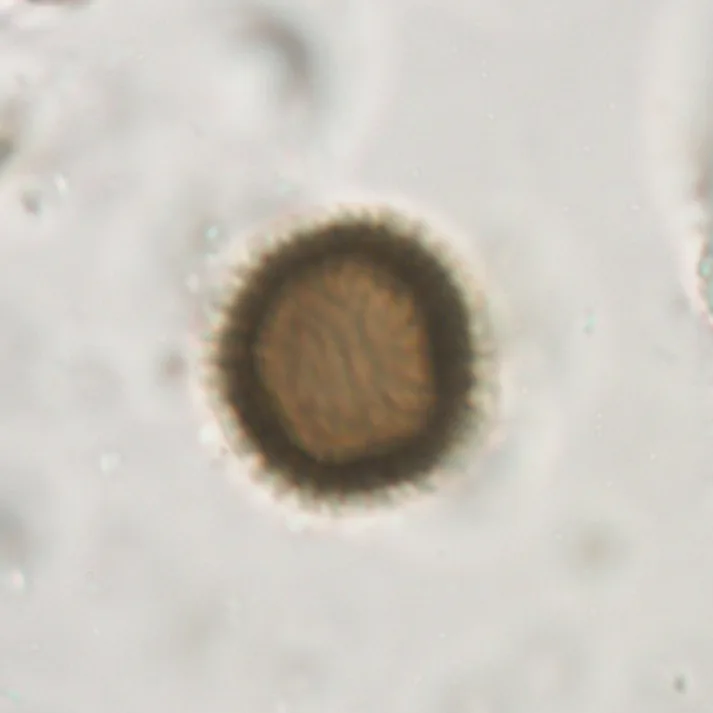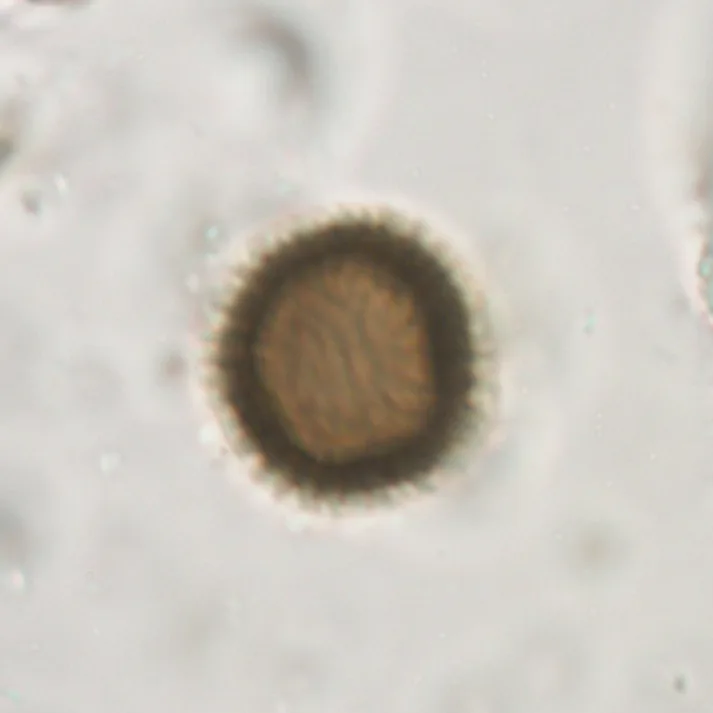Differentiation of Parasites & Pseudoparasites
Araceli Lucio-Forster, PhD
Dwight D. Bowman, MS, PhD, Cornell University

Identifying stages of parasites in samples prepared from fecal specimens is important for the proper diagnosis of parasitic infections. The best approach seems to be the memorization of the size and appearance of the expected parasites that might be found in the feces of the sampled host. Also, an ocular micrometer or an image with a scale bar is invaluable for determining an item's size, which is critical for making comparisons with images in books or other references.
A conundrum for even a trained technician is the presence of common nonparasitic items that are regular fecal elements (ie, artifacts). Some artifacts are from ingested food, some are from the air, and some are nonpathogenic inhabitants of the intestinal tract.
See image gallery below for answers and explanations.

Smut fungal spore (possibly a Tilletia species)
Smuts grow on the seeds of grasses, most notably grains. The hyphae of the fungi grow in the stem, but ultimately, as the grass flowers, they take over the seed, turning it into a distribution system called a sorus or bunt ball that is full of teliospores. At harvest (or upon ingestion), the sori burst to release the teliospores, which each have a characteristic shape and surface morphology. To identify this specific spore, we had help from Dr. Kathie Hodge (Associate Professor of Mycology, Department of Plant Pathology & Plant-Microbe Biology, Cornell University). This spore was recovered from a ruminant fecal sample; however, we can find similar spores in the feces of almost any host. (bar = 20 mcm)